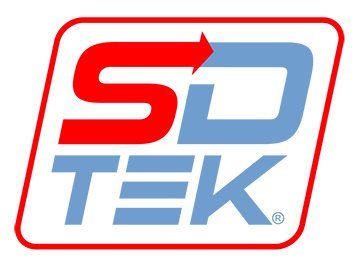What are the Most Common Types of Cybercrime

Cybercrime incidence is rising with many individuals and organizations falling victim. Cybercrime is broadly defined as Criminal activities that take place in Cyberspace. The anonymity and monetary rewards hackers obtain via the internet are helping to fuel an epidemic of cyberattacks.
New ways are constantly being developed by hackers to infiltrate businesses and steal sensitive information such as bank details and passwords and money. Sadly, the cost of cybercrime is expected to hit $6 trillion dollars in 2021.
Below we look at the most common cybercrimes today:
1. Malware Infection
The use of malware in compromising victims’ systems and devices is one of the most popular cyber-criminal actions out there. Malware has the additional advantage of giving hackers persistent access to victims’ devices.
Malware includes Trojans, viruses, and spyware deployed by cybercriminals to monitor users’ activity. They can also be used to steal personal information and even corrupt a system.
An aggressive type of malware known as ransomware is now a favorite tool for cybercriminals. It is used to lock down organizations’ computers and networks by encrypting important data and applications thereby disrupting the target’s business operations. The systems are only unlocked after a ransom payment by the victim.
2. Phishing
Phishing attacks involve the use of emails, malicious websites, SMS, and phone calls to solicit sensitive information from unsuspecting individuals or businesses. It usually involves hackers posing as a trustworthy entity such as a colleague, or business partner.
An innocent looking email from a friend or colleague may be a phishing attempt to get hold of your personal information for further compromise.
The link included in an email claiming to come from your favorite bank or online shopping platform could be an attempt to get your login information by redirecting you to fake credential-harvesting pages controlled by the attacker.
This type of cybercrime often rely’s on social engineering which are psychological tricks used to elicit actions from target victims. It involves winning the trust of a target to get them to perform certain actions on behalf of attackers.
3. Hacking
Hacking involves gaining unauthorized access into an organization’s system, network or servers. It is done to extract data, hijack or disrupt a target’s system’s operation.
Hackers get into remote systems via vulnerabilities and misconfigurations.
4. Identity Theft
Personal data obtained by cybercriminals can be weaponized for use in identity theft. With enough information about a target, a hacker can impersonate them and hijack their financial identity using social security numbers and others.
After stealing a victim’s identity, cybercriminals will request credit cards and loans on their behalf.
Access to consumers personally identifying information is made easier with the free sharing of information on social media and other platforms. Identity theft impacts victims on a long-term basis causing financial instability and making it difficult to open new accounts or request new loans.
5. Debit and Credit Card Fraud
Stolen credit or debit cards provide direct financial benefits to cybercriminals. They use these cards to shop online for various goods and services while the real card owner bears the cost.
The cards are usually obtained via phishing on fake websites or eCommerce store data leaks.
6. Distributed Denial-of-Service(DDoS)
DDoS is also a common cybercrime activity on the internet. It is used to temporarily disrupt the functions of servers, websites, and networks.
DDoS is achieved by overwhelming a remote system with massive amounts of traffic via a network of compromised computers known as botnets.
When a target is under a DDoS attack, legitimate users are unable to access its services.
DDoS attacks may be used by cybercriminals as a cover for another hack going on at the same time. It may also be launched by business rivals.
7. Data Breach and Leaks
There have been several data breaches and leaks in recent years which lead to the exposure of billions of personal information such as passwords and credit cards.
Data breaches are usually targeted at popular online stores, social media, and financial service companies. Stolen data may be sold on the dark web or directly leaked to the public.
8. Email and Social Media Hack
One of the preferred tactics of cybercriminals is hacking the email and social media accounts of victims.
This may be done through a fake password reset page or buying stolen credentials. Some users also forget to sign out from a shared device after using their personal email or social media accounts on it.
A compromised email and social media account can serve as a launchpad for further attacks such as identity theft and business email compromise.
How to Stay Safe from Cyber Crimes
- Install anti-malware security software on your PC and other devices.
- Don’t use your credit card in shady online stores.
- Sign up for a credit monitoring service to get alerts about suspicious activity on your account.
- Avoid password reuse and change your passwords regularly.
- Create and enforce multi-factor authentication policy.
- Educate employees on the dangers of phishing and other cyber attacks.
- Avoid visiting suspicious websites.
Understanding cyber crimes can help protect your business from becoming the next victim of an attack. To ensure you are following security best practices, talk to an experienced MSP such as SDTEK.
The post What are the Most Common Types of Cybercrime appeared first on SDTEK | San Diego, CA.


